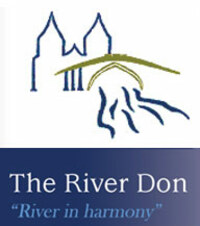


Local Sponsors
-
Semeil Farm Fishings.
Semeil Farm, Strathdon Aberdeenshire AB36 8XJ
The Semeil Farm Fishings run for approximately 1 - 3/4 of mile on the south bank from The Bridge of Newe just below Strathdon to the Bridge of Buchaam. Good trout fishing on the waters and Salmon in from April to October. Spring and Autumn runs. Grilse most years in July and August.
-
The River Don Trust, River Don Salmon Fishery Board, River Don Brown Trout Improvement Association.
George Alpine (Clerk to the Board). The River Don Trust, Old Estate Office Cluny Castle, Sauchen AB51 7RT
The Don District Salmon Fishery Board is the statutory body tasked with protecting and enhancing stocks of salmon and sea trout across the district.
More information
Many thanks to John Riley at Semeil Farm Fishings for facilitating this camera's location and to The River Don Trust, River Don Salmon Fishery Board & River Don Brown Trout Improvement Association. for capitally funding its installation. Originating from the peat flat beneath Druim na Feithe and nestled in the shadow of Glen Avon, the Don River gracefully meanders past the remnants of the recently demolished Delnadamph Lodge, situated below Cock Bridge. Its embryonic state is formed by the convergence of various streams, namely Dhiver, Feith Bhait, Meoir Veannaich, Cock Burn, and Allt nan Aighean. The northern waters of Brown Cow Hill contribute to the Don's flow, while those from the western side find their way into the River Spey, and those from the southern side join the Dee. The Don follows an intricate path eastwards, passing Corgarff Castle, traversing Strathdon and the Howe of Alford, before ultimately reaching the North Sea just north of Old Aberdeen.Several significant tributaries enhance the Don's flow, including Conrie Water, Ernan Water, Water of Carvie, Water of Nochty, Deskry Water, Water of Buchat, Kindy Burn, Bucks Burn, Mossat Burn, Leochel Burn, and the River Ury. Monitoring of river levels and flows has been conducted at various gauging stations along the Don since 1969. The gauge at Parkhill near Dyce represents the lowest point, with an average flow of 20.64 cubic meters per second (729 cu ft/s). This station captures data from 97% of the entire 1,312 square kilometers (507 sq mi) catchment area of the river.Historically, the highest recorded levels and flows occurred during the floods in November 2002, with peak levels on the 22nd of that month reaching 5.07 meters (16.6 ft) at Haughton near Inverurie and 4.17 meters (13.7 ft) at Parkhill. However, these records were surpassed in January 2016 during the 2015-16 floods, when levels at Haughton rose to 5.6 meters (18 ft), and Parkhill experienced an increase of over a meter, reaching 5.5 meters (18 ft). The resulting flooding necessitated the evacuation of residents along the river, with local rescue teams providing assistance. Affected areas included Port Elphinstone, Kintore, and Donside in Aberdeen, where precautionary evacuations were conducted, including several residential care homes.The Don River is renowned for its salmon runs, particularly in the autumn, but it also welcomes runs of fish in the spring and summer seasons. During calm and warm summer evenings, silvery seatrout make their appearance, offering anglers an unpredictable experience as they never know which species, be it salmon, seatrout, or brown trout, might take their lure. The Don is also home to eels, loaches, lampreys, and pike, further enriching its diverse aquatic ecosystem.



